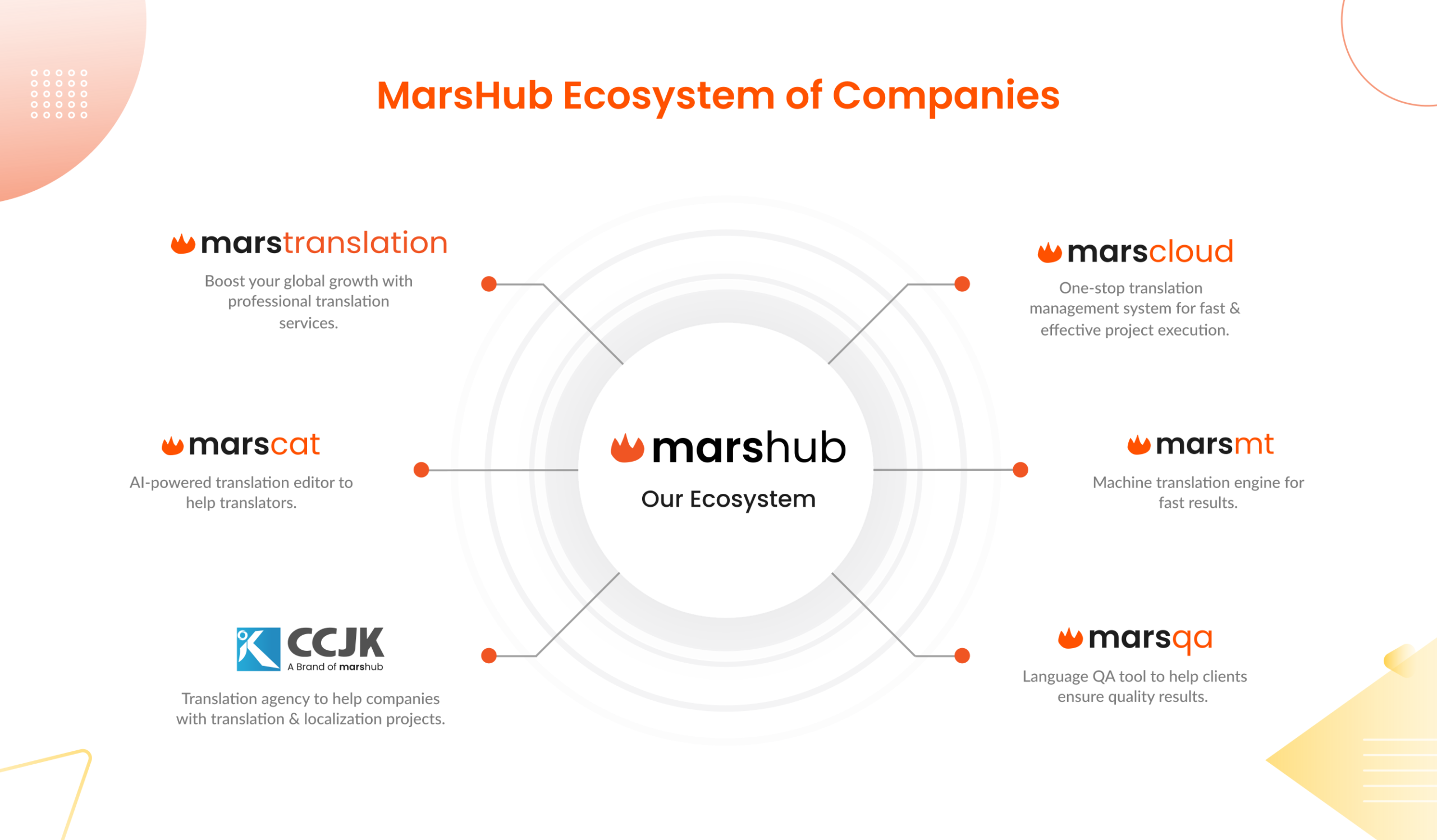Covid-19 has greatly influenced businesses around the world. From 2023-24 till date, things have changed a lot for the translation industry just like any other sector. Fortunately, unlike other industries that suffered great losses during the pandemic, things are going well for the translation business.
The translation market has experienced great growth in 2023, and the future seems even brighter. So, what should we expect from the translation industry in 2023-24?
New opportunities are opening up for translation business on a global scale. Businesses are investing in translations, and the demand for localized brands is higher than ever before. It seems like translation industry trends are going to dominate the business world in the coming years.
In this blog post, we’ll analyze the translation industry trends, demands, market size, innovations, and future predictions. So, let’s get right into it.
How Big Is the Translation Industry?

Market Size
In 2023, the global translation market size is valued at around $39.37 billion which is expected to increase to $46.22 billion by the year 2028. Global expansion of businesses leads to higher translation service demand worldwide.
Today, doing business is all about communicating and content publishing – that too in multiple languages. To be able to efficiently communicate with your customers, employees, and business partners internationally, it is important for companies to translate their content into multiple languages.
Translation services are high in demand, especially in Asian countries like China, Japan, and Korea. Regardless of the global financial crisis, the demand for language services continuously increased.
The Emergence of Machine Translation Tools
When it comes to translation, the machine translation industry is also emerging because of its higher convenience and fast turnaround rate. In 2023-24, the machine translation market is valued at $650 million and is expected to exceed 25 percent by 2027. The higher demand for multilingual content among businesses is fueling the need for machine translations. Machine translation is definitely going to cater to a big portion of the translation demand in the coming future, if not replace all human translations. It also makes the future of professional translators look uncertain.
To forecast the future of the translation industry, we should look deep into the latest trends, market demand, and industrial statistics.
Top 6 Localization and Translation Industry Trends 2024

1. Algorithmic Translation Management
Do AI-powered machines really provide better outcomes than humans? Well, we have seen these machines produce fast results at relatively low cost. However, can they replace humans in performance, creativity, and effectiveness?
Some recent studies have shown that AI machine translation systems are efficient enough to generate human-like translations. Powerful algorithms are taking over the translation industry, and no doubt they are actually providing incredible translations. The best part is that these systems can do the translations with minimum human intervention.
However, for now, these systems are not completely replacing humans. For the optimized workflow, and editing purposes you would still need human translators. So, we can say that these algorithms are making the lives of professional translators easier as they don’t have to exhaust themselves with heavy workloads.
2. Datafication of Translations
Big data is becoming a thing in the translation industry. With the help of translation datafication, we can easily teach translations to algorithms that contain billions of words. These system algorithms have way more memory than humans. This is how Google Translate works as well. Using the Neural MT, now you can put together a large-size database. Using this technique, Google has taught its English-to-French translation algorithm around 100 billion words.
How Does Data Help Machine Translation?
According to research conducted by CSA, it has analyzed that machine translation will see incredible improvement by 2023-24. We are seeing it happening, a large amount of translated content is handled by machine translators. Knowing the fact that MT systems learn translation from data, there is nothing better than having more data to enhance their efficiency and excellence. Some machine translation systems are smart enough to acquire detailed information about translators, like their age and gender. However, there is still a lot of work that needs to be done to hand over the translation jobs fully to these machines. Now, big translation giants are investing in big data to increase their machine translation intelligence.
3. Speech-To-Speech Translations
In the next 5 years, speech-to-speech translation technology will be dominating the translation industry. It is not that no one is already using it, technology is already there and functioning. Wearable devices and Skype Translator are early examples of speech technology. However, it might take some time to fully integrate this technology into translation systems at a large scale. It is true that people prefer to speak and listen rather than read or write. That’s why many bloggers now provide audio recordings for people who prefer listening.
Speech Technology Usage
Speech technology requires voices in multiple languages, data for training the system, and of course, translation system automation. Things are changing quite drastically in the translation industry, and translation service providers have to hire new talent for the development of speech services in translation systems. Not just in the translation industry, pop-up speeches are also being used in advertisements, software products, automobiles, and medical devices. To get speech technology integrated into the translation system, there is a need to build new workflows, processes, tools, and data collection methods. This again demands highly skilled people who are specialized in integrated speech technology.
4. Increased Demand for Podcasts and Videos
Around 80% of online users prefer watching video content, and it has a higher ability to engage maximum users. The content demand of users on the internet is continuously evolving. Just like illustrations make it more convenient for the online user to understand the written content, videos are likely to engage more users online. The higher demand for video content makes it necessary for businesses to get their video localized for foreign audiences. That raises the demand for subtitles and dubbing.
The spread of digital technology and business globalization is helping translation services thrive in the international market. The higher demand for multilingual podcasts and videos is also boosting the demand for professional translation services.
5. Subtitle Translations
Online media streaming platforms, such as Netflix have made the demand for subtitle translation higher than ever before. When it comes to subtitles, it is not just about films, seasons, or documentaries, it also touches a lot of other domains as well. Subtitles help your content reach non-native audiences. And it is a cheaper option than dubbing. By hiring professional translation, or employing MT systems that can recognize and translate spoken language, you can get subtitles for your videos.
It is analyzed that most online videos are watched mute, especially the ones that show up while scrolling on social media. So, if you don’t provide subtitles for the videos, it would reduce user understanding of the video, and they skip the video. So, whether you want to create a video ad or a short film about your brand introduction, you better add subtitles to enhance its visibility.
6. CAT Tools
The time has gone when businesses would totally depend on human translators for their translation needs. Now we have advanced TMS and CAT tools available that provide a high-quality translation into multiple languages in the fastest turnaround time. These systems use powerful AI technology and deliver faster, more efficient, and cost-effective translations.
The increasing demand for CAT tools significantly reduces the need for human translation in companies which also puts a question mark on the translator’s job security. However, it is too soon to predict anything about the job market of translation. For now, we are seeing CAT tools automating the translation processes and making everyday translation jobs much easier for translators. These tools have significantly reduced the translation workload for employees and eliminated the complexities of manual translation management.
Where to Buy Professional CAT Tools?
You must choose your translation CAT tools carefully considering several factors, such as performance, automation, usability, functionalities, and budget. MarsCloud is a professional localization management system with an integrated CAT tool that comes with advanced features for translation management. Its AI-powered tools streamline your translation workflows and generate human-like translations.
Localization and Translation Industry Statistics

Customer’s Statistics
According to research conducted in 2014, it is analyzed that around 74% of customers are more likely to purchase a product online if the website content is in their native language. Translating your website to a native language has a positive impact on customers’ buying behaviors and there are 80% more chances that they would prefer buying from a brand that speaks their language. 65 percent of non-native English speakers want to buy from a native website, no matter how good they are at understanding or speaking English.
Big Markets with Huge Potential
In some countries, people rarely recognize and speak English, such as China, Japan, Korea, etc. China is a big market indeed with more than 980 million internet users, for any foreign business, there are a lot of opportunities to grow. However, localization of your brand is essential because not more than 1% of the population can speak English in China. When it comes to localization, if you only focus on China, the United States, Germany, and Japan, you can easily capture half the sales potential of the world population.
Business Statistics
When it comes to businesses, they are likely to increase their revenue by 1.5 times just by translating the content. Companies that invest in translation are reported to improve their profit 2.04 times and generate around 1.27 times more per-share earnings. Similarly, the results of mobile ads are better when they’re localized. There is a 22 percent rise in conversion and a 42 percent increase in click-through rates on localized ads.
Using the right TMS tool for translation purposes also cuts your business translation costs by 90%. When you have a reliable translation tool in place, we will be investing fewer resources in eliminating human errors, sending excessive emails, or searching through databases. Moreover, companies are likely to enhance their performance by 60% when using appropriate translation software.
Translators Statistics
There are around 640k professional translators globally. In 2023-24, a survey was conducted on 7000 translators, and the results showed that 75 percent of all respondents were freelancers, with 66 percent females. It is quite challenging for translators to deal with the increasing translation demand faster. Most of these translators do not get paid fairly because of freelance market saturation.
When it comes to professional translators’ pay scale, the translators and interpreters who are working for agencies are paid 30 percent more than the self-employed. Similarly, translators with professional certifications are likely to charge 29 percent more than the ones without any specializations. In the survey, 53 percent of respondents have not acquired any professional certifications.
Around 88 percent of freelance translators use at least 1 CAT tool. It is analyzed that using a CAT tool can enhance the productivity of a freelancer translator by 30 percent.
Industries With The Highest Translation Demand

E-learning Translation
Just like everything else is going online these days, learning and education is not an exception. E-learning is not a new concept, it has been around for around a decade now. However, the pandemic has made it a necessity now. Schools and college students were mostly at home throughout the pandemic. The education department has gone all online which was a totally new experience for students and teachers.
Not just that, many people have lost their jobs, or run out of business during this time. They have utilized their free time online to learn new skills. Online training has become high in demand, where some people learn to bake banana bread and others go all out to learn yoga. All of these e-learning phenomena make the translation demand an all-time high for the e-learning industry.
Business Translations
The demand for business translation got a hike in 2023 when the world was suffering from the pandemic. Even in 2023-24 and years to come, the demand for business translations is increasing continuously. The pandemic has made people more familiar and comfortable with online shopping which also unlocks doors for opportunities for businesses to go global and reach maximum audiences. Creating a multilingual business presence is critical to the global success of any business.
From website content to the advertisement, you must localize everything to the preferences of local audiences. It not only gives the brand higher visibility in a foreign market but also enhances sales and ROI.
Medical Translations
In 2020, the emergence of COVID-19 has not just made people super conscious about their health, but the need for global coronavirus guidelines and information (both preventive and curative) has increased. During the pandemic, people didn’t prefer leaving their house, visiting a hospital for consultation or professional advice seemed even more daunting. In this scenario, the best way to get information related to COVID symptoms, prevention, cures, and vaccines, was the internet. It has also increased the need for translation services to educate world audiences about COVID-19, and for this language translation has become critical. Medical content demand does not seem like going down in the future because the internet has become a primary source of connection between healthcare providers and patients worldwide.
Media Translations
There is a high demand for translation in the media industry. Netflix is a big example; how they are catering to global audiences from diversified cultures and societies is commendable. To make the local stories reach global audiences, they also provide dubbing and subtitles for almost every content. Localization into the native languages is a must for media films, TV and radio shows to access maximum audiences. In the media industry, it is not just about translating or dubbing the content into another language but they have to change the whole feel and format of the media shows so they can connect with international audiences.
Future of the Translation Industry

Adoption of Machine Translation
AI technology is dominating the translation industry, and professional translation systems are becoming more independent in their operations. To deal with the increasing translation demand, companies are employing professional CAT and TMS tools that not only cost them less money but also provide them with faster and more effective results. Not only have these tools automated the translation process, eliminated the errors, and optimized the workflow, but they have also reduced the excessive translation workloads on translators. In the coming year, the use of Machine Transition systems will increase across multiple industries.
Need for Professional Translators
There is a direct correlation between the use of Machine Translator software and the need for professional translations. This is what raises a lot of concerns regarding the translator’s job security. Will the AI system replace human translators for good?
Well, not really. Yes, the nature of translator jobs would definitely transform, but it doesn’t necessarily mean that they will be replaced by machines. Even the companies that use the most advanced MT software need a human translator for proofreading and editing needs. Although we claim that these machines can produce a human-like translation, we will still need professional linguists around to handle translation and give translations a creative human touch.
Final Thoughts!
The translation industry has evolved too fast over the past two years, and there is a lot to come in the next few years. AI technology has enabled CAT tools to handle bulks of translations with no human involvement. CAT tools have got it all covered for global business as they offer automated workflows, fast translations, reduced costs, better collaborations, and the list goes on. This blog post discusses the latest trends in the translation industry that would help you as an LSP or global business to gird your loins for what the translation industry has to offer in the future.
We hope the information provided in this article regarding translation industry trends, demands, statistics, and future forecasts, is helpful to give you an idea about where things are heading in the translation sector.



